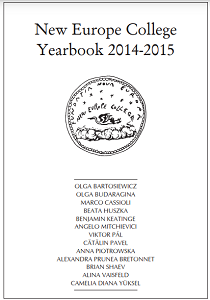UNE VILLE MARCHANDE AUX BOUCHES DU DANUBE : KILIA, DE LA DOMINATION GENOISE A LA CONQUETE OTTOMANE (XIVe XVe SIECLE)
A MERCHANT CITY AT THE MOUTH OF THE DANUBE: KILIA, FROM GENOESE DOMINATION TO THE OTTOMAN CONQUEST (14TH-15TH CENTURY)
Author(s): Marco CassioliSubject(s): Economic history, 13th to 14th Centuries, 15th Century, The Ottoman Empire
Published by: NEW EUROPE COLLEGE - Institute for Advanced Studies
Keywords: Eastern Europe; Middle Ages; Genoa; Ottoman Empire; Black Sea; Pera; Constantinople; Poland; Transylvania; Hungary; Moldova;
Summary/Abstract: The article aims to reconstruct the role of Kilia in the economic life of Eastern Europe during the late Middle Ages. More specifically, it examines the development of this trading post from the second half of the 14th century, when it was under the control of the Genoese commune, to its integration into the Ottoman Empire at the end of the 15th century (1484). During this period, the city's commercial function evolved significantly. Under Genoese rule, Kilia became one of the trading posts where slaves, grain, wax, and honey from the northern shores of the Black Sea were shipped to Pera, Constantinople, and Genoa. Under Moldavian governance, it transformed into an international fish market, exporting primarily to Poland, but also to Transylvania. Although the Ottoman conquest was traumatic, it ultimately boosted the local economy: by the late 17th century, Kilia had become the most important fishing hub along the Danube. The city's market offered at least 1,200 large sturgeons and wels catfish daily, as well as caviar. Buyers came from Constantinople, Poland, Hungary, and Moldavia.
Journal: New Europe College Yearbook
- Issue Year: 2015
- Issue No: 15
- Page Range: 87-123
- Page Count: 37
- Language: French

